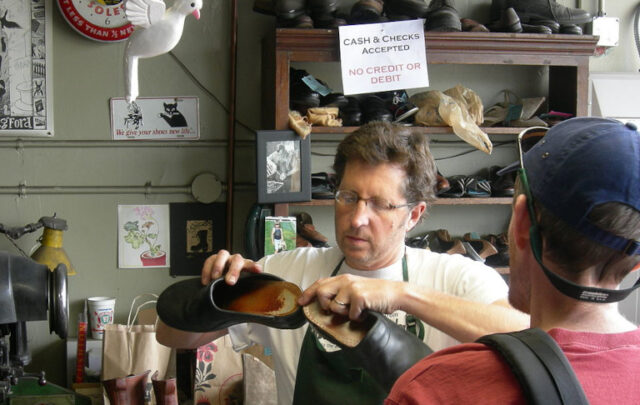Click on the headline (link) for the full text.
Many more articles are available through the Energy Bulletin homepage
The New Suburban Poverty
Eyal Press, The Nation
..The result is a historic milestone that has gone strangely ignored: For the first time ever, more poor Americans live in the suburbs than in all our cities combined.
One reason this shift may not have sunk into public consciousness is that for as long as suburbs have existed, Americans have tended to envision them as pristine sanctuaries where people go to escape brushing shoulders with the poor. The most familiar historical example–much lamented by a generation of progressives who came to associate the migration to suburbs with racial backlash and urban decline–is the mass exodus of middle-class white ethnics from the nation’s central cities, which accelerated in the wake of the riots and social unrest of the 1960s. In more recent years, it’s often assumed, the forces fueling the growth of suburbs have only made things worse–the social landscape more segregated, the sprawl more extreme, the gap increasingly vast between people who rarely set foot in cities and those who rarely leave them.
In fact, however, the gentrification of many urban neighborhoods, from Brooklyn to San Francisco to Washington, has forced many working-class residents out. In a reversal of the classic migration story, many of these displaced residents have fled to the suburbs, lured in part by the growing pool of mostly low-wage jobs there–cleaning homes, mowing lawns, staffing restaurants, strip malls and office plazas. Alan Berube, co-author of the Brookings Institution study, says the “decentralization of low-wage employment” is one of the main factors driving suburban poverty rates up. ..
(5 Apr 2007)
Death in cyburbia
James Harkin, The Guardian
A hundred visitors to an internet chatroom last month witnessed a Shropshire father of two hang himself in front of his webcam. Some of Kevin Whitrick’s fellow chatters must have imagined he was play-acting, but others were happy to goad him into killing himself. As Whitrick’s face turned purple and he began to die, one chatter punctured the heady atmosphere by wondering: “Is this real?”
Whitrick’s final moments tell us something important about what the internet has become. In this brave new world of the web, even suicide can be an interactive performance egged on by a crowd of eager spectators.
In the course of the last decade, many of us have quit watching the box in the corner of the room and turned to fiddling around with gadgets through which we can watch each other instead. The web has morphed into a vast virtual suburbia to which many of us have retired to stare idly at each other’s lives. To internet geeks this is known as “peer-to-peer” communication or “Web 2.0”; the rest of us could just as easily call it cyburbia. For millions, this online culture is the only culture that matters. Websites such as YouTube and MySpace have become pleasure parks through which almost every kind of human experience can be funnelled.
…Then there is the kind of rhetorical activism on blogs and chatrooms where everyone has to have their say while no one really listens.
…Then there are the disillusioned lefties, who have found in the rhetorical activism of the internet a new and less troublesome kind of politics than that which involved real people.
…The danger of life in cyburbia is that we don’t really get to know our neighbours. We risk huddling into small tribes defined by prejudices, urged on by the rhetorical anger of those who are never sure whether what they are so urgently participating in is entirely for real.
James Harkin was associate producer of the BBC2 series The Trap: Whatever Happened To Our Dream of Freedom?
(16 April 2007)
Unprovoked beatings of homeless soaring
Todd Lewan, Associated Press Yahoo
..A 2006 report by the National Coalition for the Homeless found 142 attacks last year against homeless people, 20 of which resulted in death — a 65 percent increase from 2005, when 86 were violently assaulted, including 13 homicides.
By comparison, 60 such attacks were reported in 1999, the year the coalition — the only entity to gather such data — began to study the problem.
And these numbers are likely low because they only reflect the most egregious attacks reported in newspapers or by agencies that serve the homeless and some victims themselves, according to Michael Stoops, acting executive director of the Washington-based coalition. ..
(8 Apr 2007)





